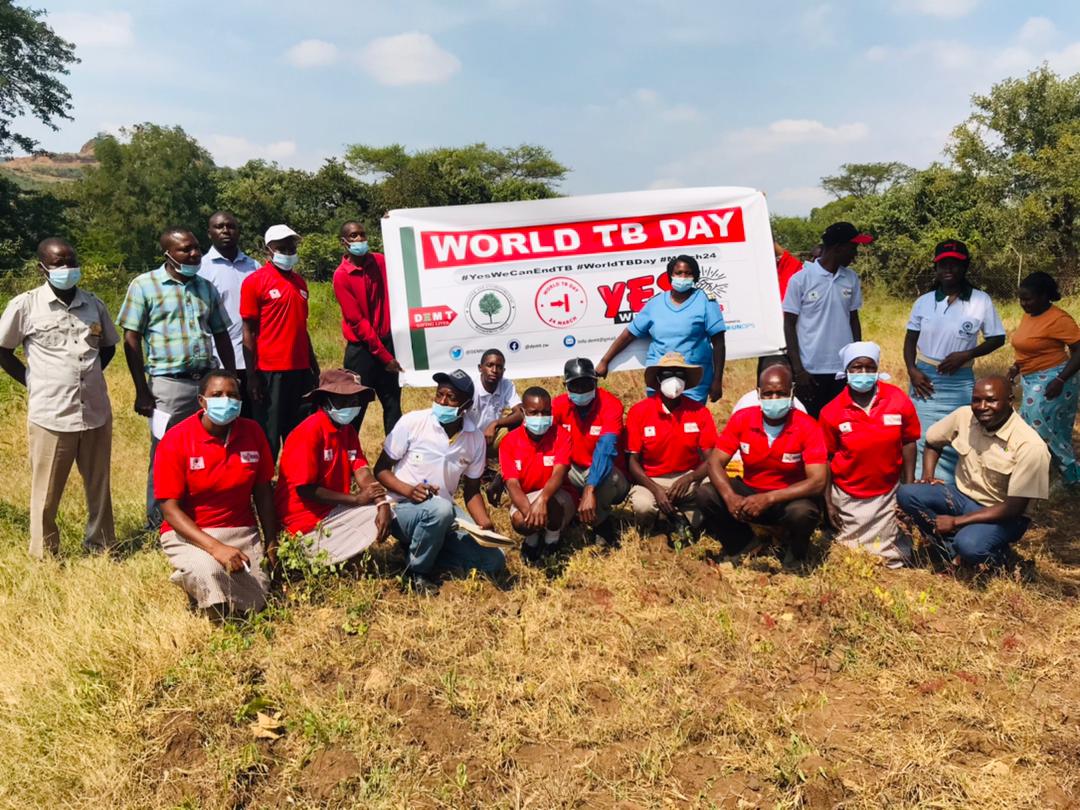By Beaven Dhliwayo
THE Disaster and Environmental Management Trust (DEMT) says inadequate investment and funding for tuberculosis (TB) control in Zimbabwe is negatively affecting efforts to meet the global target of ending the disease by 2030.
This comes as TB remains the world’s deadliest infectious killer. Each day, over 4 000 people lose their lives to TB and close to 30 000 people fall ill with this preventable and curable disease.
Global efforts to combat TB have saved an estimated 58 million lives since the year 2 000. In Zimbabwe it is estimated that about 30 000 people fall ill of TB each year and about 4,600 of these, die.
Speaking to the Daily News on the sidelines of the belated World TB Day Commemorations in Mutoko, which ran under the theme Yes! We can end TB, DEMT Head of Programmes, Romeo Chingezi said the event was meant to exhort TB affected communities to raise their voice in calling President Emmerson Mnangagwa to attend the UN High-Level Meeting on TB (UN-HLM-TB) in New York this September.
“We implore His Excellence, President Mnangagwa to meet other Heads of States and make strong commitments to accelerate TB response to reach targets,” said Chingezi.
“While there has been progress in Zimbabwe in addressing TB, a reluctance by the government to domestically fund TB programs to achieve commitments is a worrying sign that the country (and the world at large) is slowly taking its eye off TB.
“TB is a disease that is not a darling of donors and investors. We do not have donors that can support TB research, yet TB remains a disease of concern with deaths increasing for the first time in over a decade.”
Chingezi attributed the rise in TB incidents to several factors; many people diagnosed and on treatment for TB have defaulted owing to the disruption of health services in mining towns.
Furthermore, many people remain undiagnosed because they have not been reached.
“Zimbabwe has done a good job in trying to disrupt as little as possible the treatment and diagnosis of people with TB. This is evidenced by the success of awareness programmes in the media and community door-to-door campaigns to promote diagnosis and treatment.
“Countries need to invest more in finding people with TB and putting them on treatment. Until you find people, you cannot put them on treatment, and this is where we are very much lagging. TB has always been poorly funded and remains the poor cousin compared to the deep pockets for HIV and AIDS.
“We fear the worst should the world fail to change the current TB transmission trend. An estimated 5.8 million people received treatment for TB in 2020; a drop of 21 percent from 2019, and more than 4 million people worldwide remain untreated. According to Stop TB Partnership, half of those untreated are likely to die from the disease,” said Chingezi.
According to the Stop TB Partnership, a network of international organisations established in 1998 to help end TB as a public health problem, funding for TB research and development (R&D) has remained flat since 2018.
Global funding for tuberculosis (TB) research totalled 915 million US dollars in 2020 – less than half the goal of 2 billion US dollars set forth by participating country governments at the 2018 UN-HLM-TB.
In 2021, TB had a funding gap of 13 billion US dollars globally, with only 5,3 billion US dollars available for its programmes.
It experienced a drop in funding amounting to 500 000 US dollars in 2020 as many countries took money away from TB to respond to COVID-19.
A new report, Tuberculosis Research Funding Trends, 2005–2020 by Treatment Action Group (TAG) and the Stop TB Partnership, found that TB received less than 1 percent of the amount invested in COVID-19 Research and Development over the first 11 months of the pandemic.








